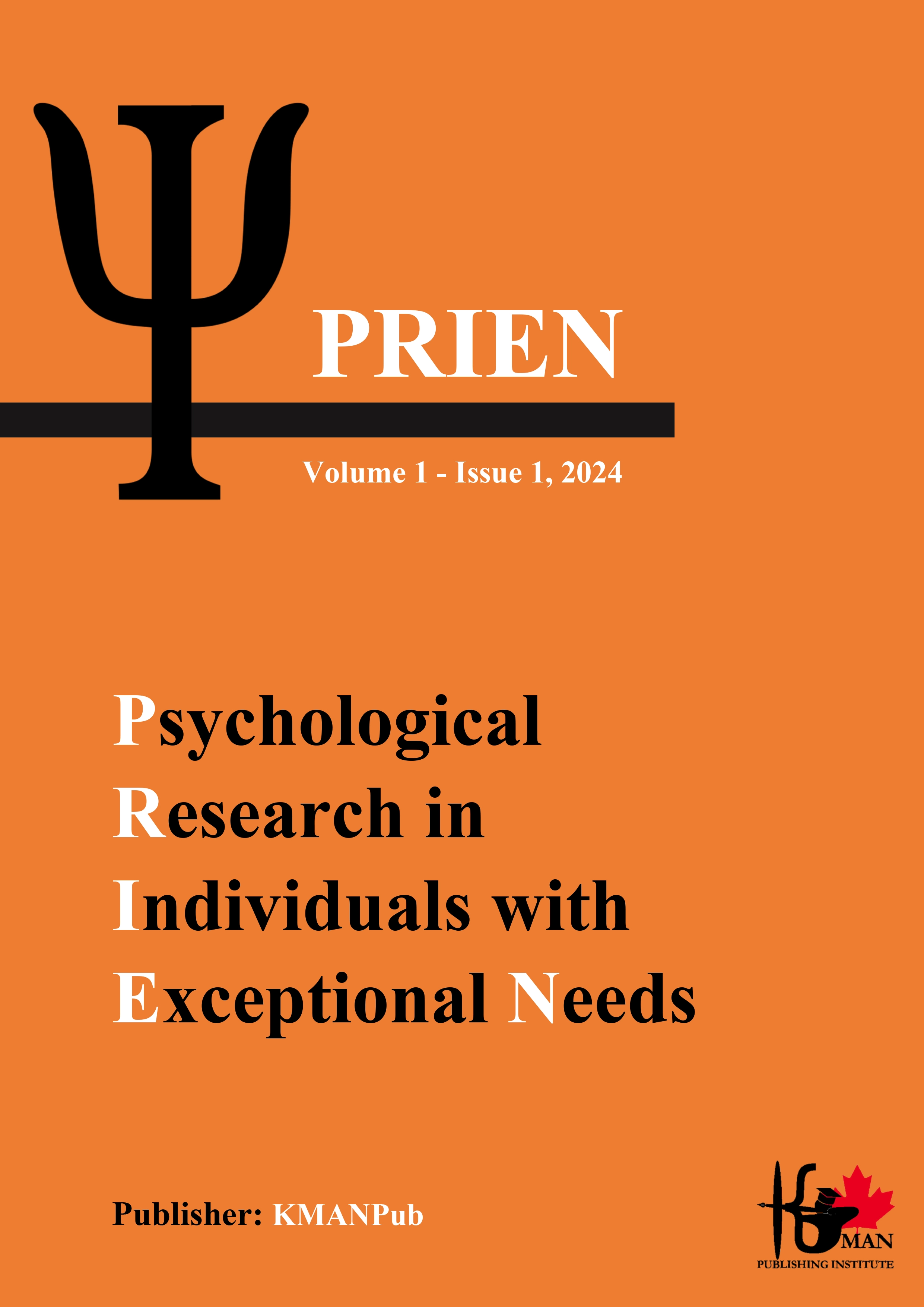Inclusive Sports Programs: Experiences and Benefits for Students with Disabilities
Keywords:
Inclusive sports, disabilities, physical benefits, social integration, emotional well-being, educational developmentAbstract
This study aims to explore the experiences and benefits of inclusive sports programs for students with disabilities, focusing on their physical, social, emotional, and educational development. The objective is to understand how these programs impact participants and identify key themes that illustrate their benefits and challenges. A qualitative research design was employed, utilizing semi-structured interviews to gather data from a diverse group of participants. The sample included 29 individuals: 15 students with disabilities, 6 teachers and coaches, and 8 parents of students with disabilities. Interviews were conducted in person or via video conferencing, recorded, and transcribed for thematic analysis. The data were coded and analyzed to identify recurring themes and patterns, with theoretical saturation guiding the final sample size. The analysis revealed four main themes: physical benefits, social benefits, emotional and psychological benefits, and educational and developmental benefits. Participants reported significant improvements in physical fitness, skill development, and health. Social benefits included enhanced social integration, communication skills, and a sense of belonging. Emotional and psychological benefits encompassed increased emotional well-being, psychological resilience, and reduced anxiety. Educational benefits included better academic performance, life skills, and career skills development. These findings align with previous studies highlighting the multifaceted benefits of inclusive sports programs. Inclusive sports programs significantly enhance the physical, social, emotional, and educational well-being of students with disabilities. The study underscores the importance of designing inclusive programs that accommodate diverse needs, providing adequate training for educators and coaches, and fostering a supportive environment. Future research should aim to include larger and more diverse samples, incorporate quantitative measures, and explore the long-term impacts of these programs to further refine and maximize their benefits.
Downloads
References
Bruning, A. M., Cardinal, B. J., & Kennedy, W. (2020). Inclusivity of Collegiate Campus Recreation Programs in Region VI of NIRSA: A Content Analysis of Websites. Journal of Kinesiology & Wellness, 9, 43-49.https://doi.org/10.56980/jkw.v9i.69
Campos, M. J. (2024). Listening to Stakeholders’ Voices on Funding Social Inclusion in Sport for People With Disabilities—Proposal for Criteria. Sports, 12(6), 147.https://doi.org/10.3390/sports12060147
Demirci, P. T. (2019). Recreational Activities for With Disability: School-Aged Children and Adolescents. International Journal of Recreation and Sports Science, 3(1), 46-57.https://doi.org/10.46463/ijrss.533037
Emmers, E., Baeyens, D., & Petry, K. (2022). Does Intense Contact With People With Disabilities Lead to More Inclusive Behaviour Within Professional Practice? Educational Studies, 49(3), 492-506.https://doi.org/10.1080/03055698.2022.2150512
Grenier, M., Collins, K., Wright, S., & Kearns, C. (2014). Perceptions of a Disability Sport Unit in General Physical Education. Adapted Physical Activity Quarterly, 31(1), 49-66.https://doi.org/10.1123/apaq.2013-0006
Hammond, A., Bundon, A., Gadd, C. P., & Konoval, T. (2022). Enactments of Integrated, Disability-Inclusive Sport Policy by Sporting Organizations. Sociology of Sport Journal, 39(1), 35-46.https://doi.org/10.1123/ssj.2020-0151
Harthy, S. S. A. (2024). The Role of Sports Clubs in Promoting Social Integration Among People With Disabilities in Saudi Arabia. 3(2).https://doi.org/10.57197/jdr-2024-0007
Hiemstra, M. (2023). Sensing Inclusion Among Visually Impaired and Guide Runners. International Review for the Sociology of Sport, 59(1), 22-37.https://doi.org/10.1177/10126902231172919
Kurniawan, A. (2024). Optimizing Social and Economic Inclusion Through Adaptive Sports Programs for Persons With Disabilities: A Pathway to Achieving SDGs. International Journal of Current Science Research and Review, 07(05).https://doi.org/10.47191/ijcsrr/v7-i5-67
MacDonald, C., Bryan, R., Lieberman, L. J., & Foley, J. T. (2020). “You Think Differently After Playing This Sport”: Experiences of Collegiate Goalball Players. Recreational Sports Journal, 44(2), 139-148.https://doi.org/10.1177/1558866120964812
Murphy, N., & Carbone, P. S. (2008). Promoting the Participation of Children With Disabilities in Sports, Recreation, and Physical Activities. Pediatrics, 121(5), 1057-1061.https://doi.org/10.1542/peds.2008-0566
Oakes, L. R., Milroy, J. J., George, S. D., & Smith, A. (2022). Examining Campus Recreation and Sports Experiences of College Students With Intellectual and/or Developmental Disabilities (IDD) and Attitudes of College Students Without IDD: A Special Olympics Unified Sports® Study. Recreational Sports Journal, 46(1), 78-94.https://doi.org/10.1177/15588661221086212
Oblak, V. P. (2023). Narrowing the Definition of Social Inclusion in Sport for People With Disabilities Through a Scoping Review. Healthcare, 11(16), 2292.https://doi.org/10.3390/healthcare11162292
Robeznieks, E. (2021). Examining the Potential Inclusion of Adaptive Sport in the NCAA.https://doi.org/10.32920/ryerson.14644962
Rougeau, K. M., Sakyi, K. S., & Piletic, C. K. (2022). Inclusivity &Amp; Modification Attitudes in Collegiate Intramural Sport: A Pilot Study. Recreational Sports Journal, 46(2), 141-151.https://doi.org/10.1177/15588661221097707
Salend, S. J., & Duhaney, L. M. G. (1999). The Impact of Inclusion on Students With and Without Disabilities and Their Educators. Remedial and Special Education, 20(2), 114-126.https://doi.org/10.1177/074193259902000209
Shapiro, D. R., Pate, J. R., & Cottingham, M. (2020). A MultiInstitutional Review of College Campus Adapted Intramural Sports Programming for College Students With and Without a Disability. Recreational Sports Journal, 44(2), 109-125.https://doi.org/10.1177/1558866120952093
Stanojević, Č., Kim, Y., Piatt, J., & Kim, J. (2023). The Inclusive Adaptive Sport Program on a College Campus: Changing the Narrative. Recreational Sports Journal, 47(2), 83-97.https://doi.org/10.1177/15588661231156140
Swadesi, I. K. I., Kanca, I. N., & Wijaya, M. A. (2021). Analysis of Problems and Challenges in Teaching Sports, Health and Physical Education to Students With Disabilities.https://doi.org/10.2991/assehr.k.210715.057
Wilson, P. E., & Clayton, G. H. (2010). Sports and Disability. Pm&r, 2(3). https://doi.org/10.1016/j.pmrj.2010.02.002
Yin, M., Siwach, G., & Belyakova, Y. Y. (2021). The Special Olympics Unified Champion Schools Program and High School Completion. American Educational Research Journal, 59(2), 315-344.https://doi.org/10.3102/00028312211032744
Yun, J., Sur, M. H., & Shapiro, D. R. (2021). Physical Activity Promotion for School-Age Children With Disabilities. TEACHING Exceptional Children, 54(1), 44-51.https://doi.org/10.1177/00400599211041687
Downloads
Additional Files
Published
Issue
Section
License

This work is licensed under a Creative Commons Attribution-NonCommercial 4.0 International License.
















